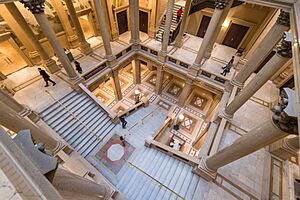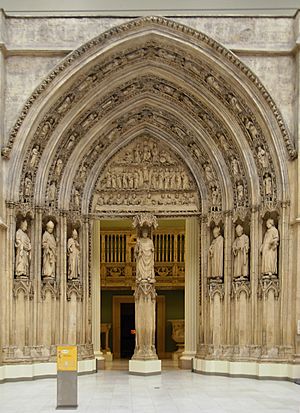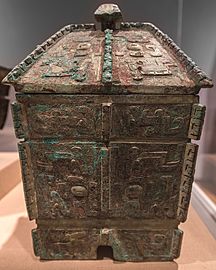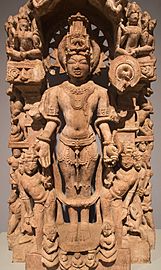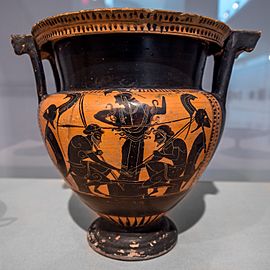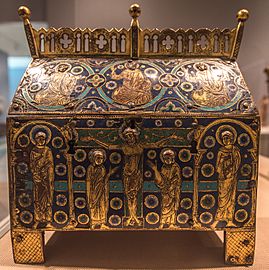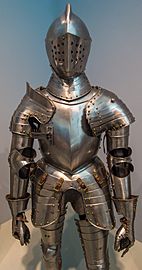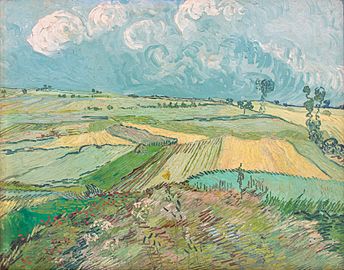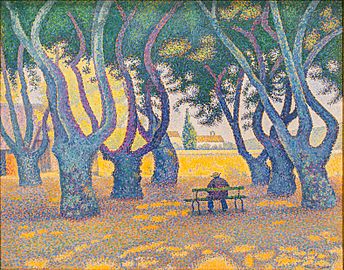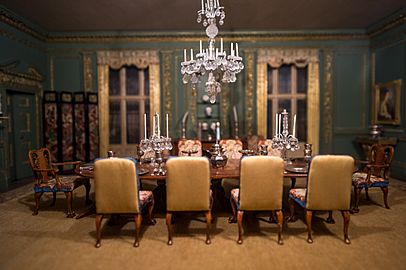Carnegie Museum of Art facts for kids
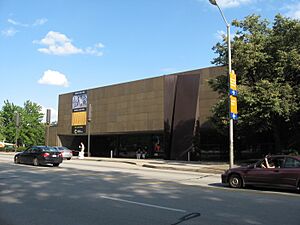
Exterior view of the Sarah Mellon Scaife Gallery
|
|
| Former name | Department of Fine Arts, Carnegie Institute |
|---|---|
| Established | November 5, 1895 |
| Location | 4400 Forbes Ave, Pittsburgh, Pennsylvania 15213 |
| Type | Art museum |
| Accreditation | American Alliance of Museums |
| Nearest car park | On site and street |
The Carnegie Museum of Art is a super cool place in Pittsburgh, Pennsylvania, where you can see amazing art! It's located in the Oakland neighborhood. This museum first opened its doors on November 5, 1895. Back then, it was called the Department of Fine Arts, Carnegie Institute.
Over the years, the museum grew a lot. A new building was added in 1907. In 1986, its name officially became the "Carnegie Museum of Art." This helped everyone know it was one of the four awesome Carnegie Museums.
Contents
Discovering the Museum's History
How the Museum Started
The idea for this museum came from Andrew Carnegie in 1886. He wanted a place to show the "progress and development of pictorial art in America." The art gallery first opened on November 5, 1895. It was inside the Carnegie Library of Pittsburgh's main building.
Carnegie hoped the museum would collect art from the "Old Masters of tomorrow." This meant he wanted to find great artists who would be famous in the future.
Growing Bigger and Better
The museum got much bigger in 1907. New sections like the Hall of Architecture and Hall of Sculpture were added. Andrew Carnegie helped pay for these expansions too.
Later, in 1974, the huge Sarah Mellon Scaife Gallery was built. This new part was designed by architect Edward Larrabee Barnes. It more than doubled the museum's space! It also added a children's studio, a theater, and a café. An art critic from The New York Times called it an "unflawed paradise." The gallery has been updated several times since then.
Today, the museum also hosts the Carnegie International every few years. This is a big art show that brings in important artworks from all over the world. Many famous pieces have been added to the museum's collection from these shows. These include The Wreck (1896) by Winslow Homer and Arrangement in Black: Portrait of Señor Pablo de Sarasate (1884) by James A. McNeill Whistler.
Exploring Art Collections
What You Can See
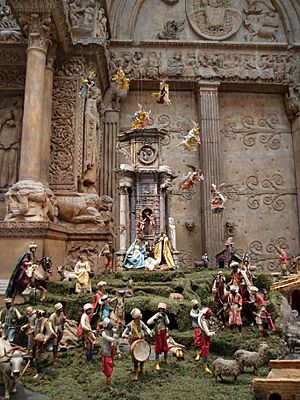
The Carnegie Museum of Art has about 35,000 pieces in its permanent collection! This includes paintings, sculptures, drawings, and even Japanese prints. You can see art from the late 1600s all the way to today.
About 1,800 artworks are on display at any time. The museum is especially known for its collections of aluminum objects and chairs. It also has a huge collection of negatives from the famous African American photographer Charles "Teenie" Harris.
Special Art Centers
- Heinz Architectural Center - This center focuses on architecture. It has drawings, models, and designs for buildings, landscapes, and even furniture. It has a large exhibition space and a library full of books about architecture.
- The Hillman Photography Initiative - This group creates cool projects about photography. They host live events, online projects, videos, and art pieces. A team of five "agents" plans new programs each year.
Popular Collection Themes
The museum organizes its art into different themes. Here are some of them:
- Contemporary Glass
- Teenie Harris Photographs: Erroll Garner and Jazz from the Hill
- Carnegie International
- Japanese Prints
- Pittsburgh Artists
- The Art of the Chair
- Pictorialist Photography
- Painting and Sculpture 1860–1920
- W. Eugene Smith
Discovering the Galleries
Famous Exhibition Halls
- Ailsa Mellon Bruce Galleries (1907) – These galleries were first built to show copies of bronze art from ancient Pompeii. Today, they display over 500 objects. You can see American and European decorative arts from the 1700s to modern designs.
- Hall of Architecture (1907) – This hall is incredible! It has almost 140 full-size plaster casts. These are copies of parts of famous buildings from ancient Egypt, Greece, and Rome. You can also see pieces from medieval and Renaissance Europe. It's one of the biggest collections of architectural casts in the world!
- Hall of Sculpture (1907) – This hall looks like the inside of the ancient Greek Parthenon temple. It was made to hold copies of Egyptian, Greek, and Roman sculptures. Now, it shows off many works from the museum's permanent collection.
- Heinz Architectural Center (1993) – This center is all about architectural drawings and models. It's a great place to learn about how buildings are designed.
- Scaife Galleries (1974) – These galleries show the main collection of the museum. You can find paintings, sculptures, drawings, films, and video art here.
- Forum Gallery – This special room is on the first floor. It's dedicated to showing temporary exhibits of modern art. It opened in 1990 and always has something new and exciting to see.
Educational Programs for Kids
The Carnegie Museum of Art has offered Saturday art classes for over 75 years! These classes take place right in the museum's galleries. Famous artists like Andy Warhol and Philip Pearlstein even took classes here when they were young. The museum has different classes for various age groups, so there's something for everyone!
Gallery
-
Bronze ritualistic vessel, 1300–1150 BCE, Shang dynasty, China
-
Ancient Greco-Roman vase
-
Farallon Island, 1887, oil on canvas, by Albert Bierstadt
-
Wheat Fields After the Rain (The Plain of Auvers), 1890, oil on canvas, by Vincent van Gogh
-
Place des Lices, 1893, oil on canvas, by Paul Signac
-
Water Lilies (Nymphéas), 1915–1926, oil on canvas, by Claude Monet
Museum Leaders
Past Directors of the Museum
Here are the people who have led the Carnegie Museum of Art over the years:
- John W. Beaty (1896–1921)
- Homer Saint-Gaudens (1922–1950)
- Gordon Bailey Washburn (1950–1962)
- Gustave Von Groschwitz (1963–1968)
- Leon Arkus (1968–1980)
- John R. Lane (1980–1987)
- Phillip M. Johnston (1988–1996)
- Richard Armstrong (1996–2008)
- Lynn Zelevansky (2009–2017)
- Eric Crosby (2018–present)
See also
 In Spanish: Museo de Arte Carnegie para niños
In Spanish: Museo de Arte Carnegie para niños
- Carnegie Museums of Pittsburgh
- Homer Saint-Gaudens
- Frick Art & Historical Center
- List of museums in Pennsylvania
- List of largest art museums
- Sally Dixon


